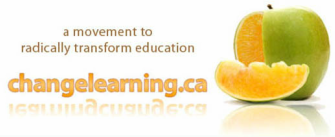|
Canada has a strong history of investment (both philosophical and financial) in public education. Over 40 billion dollars is spent annually on getting our children from kindergarten to grade 121, yet public opinion polls show confidence in the education system is at an all-time low2, home schooling is growing exponentially and the percentage of children attending private schools has doubled in the past 25 years3. Although public education certainly appears to work for a percentage of our children, an increasing number of factors point to a deeply flawed system.
Student Disengagement
Recent research on early leavers indicates that school-based factors such as irrelevant curriculum, passive instruction, disregard for students’ learning style and lack of support all contribute to youth dropping out4. Students are disengaging from a process that does not meet their needs or support their successful transition to independence throughout adolescence.
What’s evident is a pattern of growing disengagement, dissatisfaction and disconnection as students progress through the educational system into adolescence. Instead of inspiring children to learn, we are somehow turning them off of education and extinguishing their innate curiosity and desire to make sense of their world. Engaged kids learn, flourish and become passionate about life – their own and others. Disengaged kids don’t learn, tune out and look for connection elsewhere, often with consequences that are detrimental to themselves, others and society at large. We see this failure reflected daily on our streets, in our malls and in the news.
Heather MacTaggart on Losing the Love of Learning
Not Making the Grade Despite decades of educational reform and the efforts of countless dedicated educators, the indicators of systemic problems continue.
On the basis of graduation rates alone, almost 25% of our children are failing to attain the minimum educational currency required for success in our society. Many youth are leaving school without having the crucial skills (cognitive, social and attitudinal) necessary to succeed and to flourish as independent adults in an increasingly complex world. The system as it stands can’t fulfill its most basic mandate—to prepare all of our youth to function effectively in their culture as they grow up to face the challenges of adulthood.
Failing Some Children More Than Others
Paramount to Canada’s democratic foundation, public education is provided to ensure that every child, regardless of birth or circumstance, has equal opportunity. Yet Canadian students from higher socio-economic families show stronger literacy skills and perform better in math than students from families with low socio-economic status15. In fact, statistics show that being a child in a low-income family in Canada means having a diminished readiness to learn in preschool, reduced chances of attending university and increased likelihood of living in poverty as an adult16. In a shocking example from Winnipeg, 77% of the students from high-income families wrote and passed the standardized grade 12 Language Arts Exam—compared with only 27% of the students from low-income families17.
It is not just children from low-income families that are at higher risk. The flaws of the current system are reflected in lower graduation rates for certain ethnic groups18 and staggering differences in graduation rates and performance on standardized tests among Aboriginal youth. The system, it seems, has failed our First Nations children more than any other group.
If education has the power to shape lives as well as our society, we are simply not doing enough to ensure that all of our children have effective learning opportunities that help them maximize their own life trajectories. A system that fails its weakest members perpetuates cycles of poverty, the marginalization of minorities and the loss of human potential in this country.
|
The cognitive differences of the Digital Natives cry out for new approaches to education with a better “fit”. Featured VideoPrograms at Work |
Endnotes
- Education Indicators in Canada: Report of the Pan-Canadian Education Indicators Program 2005. Canadian Education Statistics Council, Statistics Canada.
- CTV’s Canada AM, Canada AM Education Survey (conducted Sept. 6, 2006). [8% of respondents gave Canada’s education system an “A” rating.]
- Claudia R. Hepburn, Fraser Insitute bulletin: The Case for School Choice: Models From the United States, New Zealand, Denmark, and Sweden, Critical Issues Bulletin (Vancouver: The Fraser Institute, Sept. 1999).
- Community Health Systems Resource Group, Early School Leavers: Understanding the Lived Reality of Student Disengagement From Secondary School (Toronto: The Hospital for Sick Children, May 30, 2005).
- Patrick Blouin, A profile of elementary and secondary school principals in Canada: First results from the 2004-2005 Survey of Principals Centre for Education Statistics, Statistics Canada.
- Education Indicators in Canada: Report of the Pan-Canadian Education Indicators Program 2005. Canadian Education Statistics Council, Statistics Canada.
- William Boyce, Young People in Canada: Their Health and Well-being (Ottawa: Health Canada, 2002).
- The McCreary Centre Society, Healthy Connections: Listening to BC Youth. Highlights From the Adolescent Health Survey II (Vancouver: The McCreary Centre Society, 1999).
- Education Indicators in Canada: Report of the Pan-Canadian Education Indicators Program 2005. Canadian Education Statistics Council, Statistics Canada.
- Andrew Biemiller and Donald Meichenbaum, Nurturing Independent Learners: Helping Students Take Charge of Their Learning (1998).
- Education Indicators in Canada: Report of the Pan-Canadian Education Indicators Program 2005. Canadian Education Statistics Council, Statistics Canada.
- Claudia R. Hepburn, “The Case for School Choice.” The Fraser Institute,
- Report – State of Learning in Canada: No Time for Complacency. Canadian Council on Learning, 2007.
- Patric Blouin, A Profile of Elementary and Secondary School Principals in Canada: First Results From the 2004-2005 Survey Of Principals in Education Matters: Insights on Education, Learning and Training in Canada, Vol. 3, No. 2 (Ottawa: Statistics Canada, June 2006).
- Education Indicators in Canada: Report of the Pan-Canadian Education Indicators Program 2005. Canadian Education Statistics Council, Statistics Canada.
- Education Indicators in Canada: Report of the Pan-Canadian Education Indicators Program 2005. Canadian Education Statistics Council, Statistics Canada.
- Grade 12 Performance by Winnipeg SES Group, Language Arts Standards Test, 2001/02, as cited in “Making Our Kids Successful” (presentation delivered at The Learning Partnership National Dialogue for Children at Risk, Feb. 27, 2006, by Bruce Ferguson, The Hospital for Sick Children and University of Toronto).
- Francine Kopun, “Immigrant Teens More Ambitious,” Toronto Star, April 6, 2006.
- Statistics taken from Comparative Information on Education, Exhibit 4.2 in 2000 Report of the Auditor General of Canada (Ottawa: Office of the Auditor General of Canada, April 2000), and from ‘Aboriginal Report: How Are We Doing?’ Demographics and Performance of Aboriginal Students in BC Public Schools, 2001-2002 (British Columbia Ministry of Education, July 2002).
- Louise Brow, “Ontario’s Forgotten Children: Making the Grade. Gap Between Native, Non-Native Schools Growing: Students Don’t Get the Support They Need to Learn,” Toronto Star, April 25, 2005.
- Statistics taken from Comparative Information on Education, Exhibit 4.2 in 2000 Report of the Auditor General of Canada (Ottawa: Office of the Auditor General of Canada, April 2000), and from ‘Aboriginal Report: How Are We Doing?’ Demographics and Performance of Aboriginal Students in BC Public Schools, 2001-2002 (British Columbia Ministry of Education, July 2002).
- Ibid.
- Michael Mendelson, Aboriginal Peoples and Postsecondary Education in Canada (Caledon Institute of Social Policy, July 2006). Available from Caledon Institute of Social Policy.
- Statistics taken from ‘Aboriginal Report: How Are We Doing?’ Demographics and Performance of Aboriginal Students in BC Public Schools, 2001-2002 (British Columbia Ministry of Education, July 2002).
- Office of the Auditor General of Canada, in 2004 Report of the Auditor General of Canada – Chapter 5—Indian and Northern Affairs Canada—Education Program and Post-Secondary Student Support (Ottawa: Office of the Auditor General of Canada, November 2004).



